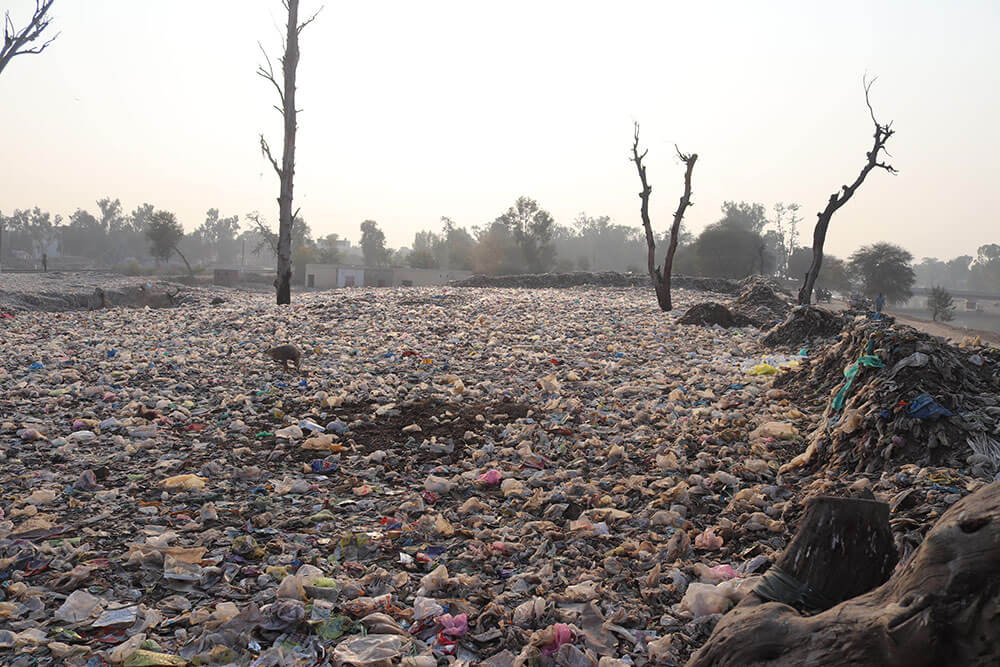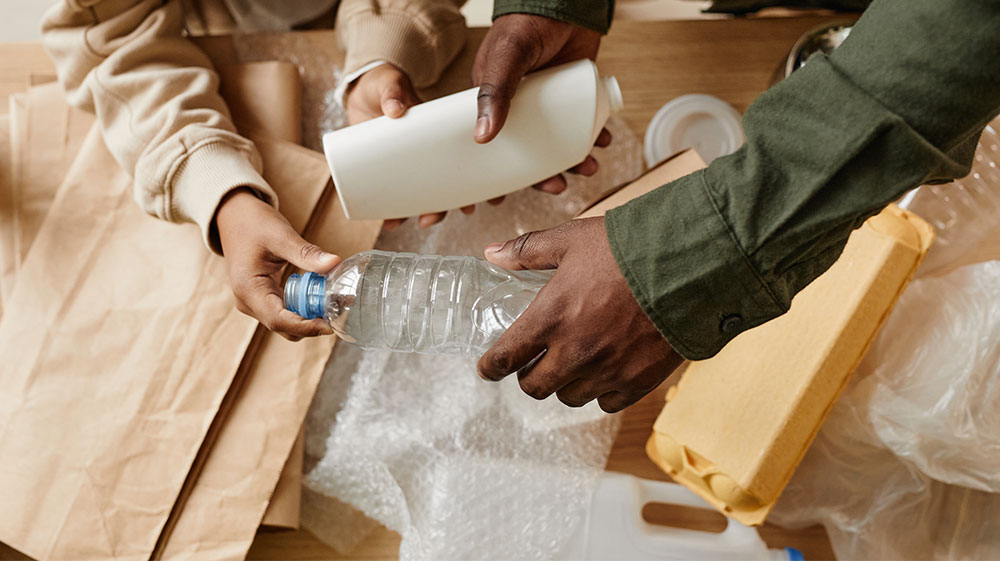 Plastic Pollution and Recycling
Plastic Pollution and Recycling

Every year on March 18, the world celebrates Global Recycling Day—a vital reminder of the role we all play in preserving our planet through smarter waste management and sustainable consumption. As we recognize this international initiative, one solution gaining traction in the war against waste is the Deposit Return Scheme (DRS).
But what exactly is a deposit return scheme, and does it truly work in solving our waste crisis? Let’s explore how it works, successful global models, and the impact of DRS as the world looks toward a cleaner, circular economy.
What is a deposit return scheme (DRS)?
A deposit return scheme (DRS) is a container deposit system designed to encourage the return of beverage containers for recycling. When consumers purchase bottled drinks, they pay a small deposit fee, which is refunded upon returning the empty container to designated collection points.
The primary goals of DRS include:
- Reducing litter in public spaces and landfills
- Boosting recycling rates by incentivizing returns
- Supporting a circular economy by reusing valuable materials
- Decreasing reliance on virgin materials, reducing environmental footprint
Given increasing concerns about plastic pollution and waste management, DRS has become a crucial tool in sustainable waste solutions worldwide.
How a Deposit Return Scheme Works
The mechanics of DRS are relatively simple:
1. Consumer Purchase: A deposit is added to the price of beverages sold in plastic, glass, or aluminum containers.
2. Consumption and Return: Consumers return empty containers to reverse vending machines (RVMs) or designated collection centers.
3. Deposit Refund: Consumers receive their deposit back, often in cash or store credit.
4. Processing and Recycling: The returned containers are sorted, processed, and recycled to be repurposed into new products or containers.
Benefits of DRS
1. Reduces litter in urban and natural environments
2. Encourages public participation in recycling efforts
3. Conserves resources by increasing the use of recycled materials
4. Creates jobs in waste management and recycling industries

Global examples of deposit return schemes (DRS)
Let’s look at how various countries are adopting and adapting DRS to their context—and the results they’re seeing.
Germany’s Pfand system
Germany’s Pfand system is a global leader in beverage container recycling. It offers both reusable and single-use options. The first has producer-set deposit prices that range from €0.08-€0.25 can be used multiple times and can be made from glass or PET plastic. The second are single-use containers, which are used only once before recycling. The government applies a fixed €0.25 deposit on these. Containers are returned through reverse vending machines widely available in supermarkets. The result? An impressive return rate of above 98%, making Germany a leader in beverage container recycling.1
In 2021, Germany implemented a ban on certain single-use plastics. Starting 2025, they will also be introducing a minimum quote of 25% recycled PET content in drink bottles.2
United Kingdom delayed DRS rollout
The UK plans to launch a national DRS in 2027 due to policy and logistical challenges. According to Keep Britain Tidy’s National Litter Survey, 75% of the UK’s estimated 8 billion drink containers are wasted – through landfills, incineration, or in waterways.3
Europe’s high- performing DRS schemes lead the way
15 European nations have embraced DRS, with Norway, Sweden, and Denmark operating some of the most efficient programs. High deposit values and advanced return systems contribute to return rates exceeding 90%. Denmark’s DRS is managed by the non-profit organization Dansk Retursystem. It incentivizes consumers to return beverage containers—such as plastic bottles, glass bottles, and aluminum cans—by adding a small deposit to the purchase price, refunded upon return of the empty container. This system has achieved remarkable success, with a return rate of 93% in 2021, making it one of the world’s most effective recycling programs.4
France’s DRS faces opposition from stakeholders
France is actively working on implementing a nationwide DRS to support its circular economy goals. French local authorities have opposed this initiative due to concerns that the costs associated with implementing and managing the DRS could outweigh its environmental benefits.5
United States and bottle bills
The U.S. lacks a federal DRS, but 10 states, including California, Oregon, and New York have implemented bottle bills, with deposits ranging from $0.05 to $0.10 per container. Oregon’s 10-cent deposit program boasts an over 85% return rate, demonstrating that higher deposits and program upgrades lead to greater participation.6
Philippines pilots DRS for EPR law
The Philippines is integrating DRS as part of the Extended Producer Responsibility (EPR) law. Organizations like Plastic Bank operate systems where people exchange plastic for additional income, digital vouchers for groceries, and insurance. A pilot project for the approval and implementation of the first DRS pilot site is targeted for 2025, with the support of the Norwegian Embassy in Manila and the WWF. 7
Indonesia’s plastic waste strategies
The Indonesian government is being encouraged to adopt DRS as part of its National Plastic Action Partnership strategy to cut ocean plastic leakage by 70% by 2025 and achieve a circular economy for plastics by 2040.8
Plastic Bank also operates in Indonesia, and other organizations are supporting pilot DRS feasibility studies that are focused on reverse logistics, waste collection incentives, and community engagement in Bali, Jakarta and Surabaya. While a deposit scheme is not planned in Indonesia, the Environment and Forestry Ministry’s Hazardous Waste, Garbage, and Toxic Substances Management Director, General Rosa Vivien Ratnawati has noted government regulations require redesigning and retrieving packaging.9
Canada’s provincial DRS programs
Several Canadian provinces, including British Columbia, Alberta, and Ontario, have long-standing deposit systems. In British Columbia, DRS covers aluminum, glass, and plastic bottles. In 2021, the recovery rate for plastic was 55%.10
In Quebec, a 10-cent deposit fee was implemented on all plastic bottles ranging from 100 millilitres to two litres starting March 2025. Consumers can get their money back when they return the bottle to one of Quebec’s 3,500 participating retailers.11
Brazil sees DRS as an emerging initiative
Brazil has experimented with deposit-based recycling, focusing on urban centers. With increasing governmental support, the expansion of DRS is expected to contribute to waste reduction efforts.
Brazil is experimenting with reverse logistics centers and informal sector integration.12 Aside from Plastic Bank, there are other projects in São Paulo and Rio de Janeiro that support waste pickers and reduce landfill dependency.
Egypt encourages recycling with incentives
Egypt has faced significant waste management challenges, and discussions around a formalized DRS are ongoing. Recent projects, including Plastic Bank’s initiatives to recover plastic in tourist areas, show that financial rewards can encourage recycling behaviour.
How DRS supports a circular economy and environmental sustainability
Circular economy benefits
- Extends product lifecycles by reusing and recycling materials.
- Reduces extraction of raw materials
- Supplies manufacturing industries with recycled inputs
Environmental impact
- Reduces beverage container litter: Studies by Reloop Platform show DRS reduces beverage container litter by up to 40% in urban areas.13
- Recycling materials requires less energy than producing new ones. Every ton of recycled PET saves up to 1.5 tonnes of CO₂ emissions
- Prevents ocean and land pollution, where beverage containers are a major contributor.
Social and economic benefits
- Job creation in the recycling and waste management sectors.
- Financial incentives for consumers, encouraging sustainable habits.
- Community engagement, as organizations and charities collect containers for fundraising. Community-based schemes in countries like the Philippines and Brazil provide income streams for informal waste workers and empower underserved populations.
Challenges of implementing deposit return schemes
- Implementation costs: Setting up a DRS requires investment in collection infrastructure.
- Consumer inconvenience: Some critics argue that returning containers adds hassle.
- Inefficiencies in some regions: Poorly designed systems can lead to low participation rates.
The role of DRS in a sustainable future
Global Recycling Day emphasizes waste reduction, resource conservation, and sustainable solutions—all of which DRS supports. Expanding these schemes worldwide would contribute significantly to achieving circular economy targets.
You can help by:
- Participating in existing programs
- Encouraging businesses and policymakers to adopt or improve DRS
- Educating others about the benefits of returning beverage containers
Global Recycling Day reminds us that waste is a resource, and a well-designed deposit return scheme reduces waste, preserves resources, and empowers communities. Learn more about the impact of Plastic Bank’s global bottle deposit program and find out how you can help make a difference.
- Irene Banos Ruiz, Jeanette Cwien, “A look at Germany’s bottle deposit scheme,” Deutsche Welle, Nov 17, 2021, https://www.dw.com/en/how-does-germanys-bottle-deposit-scheme-work/a-50923039
- Sam Caplen, “Germany and EPR for Packaging: A Model for Sustainable Waste Management,” https://clarity.eco/news/germany-and-epr-for-packaging-a-model-for-sustainable-waste-management/
- Deposit Return Scheme (DRS), Keep Britain Tidy, https://www.keepbritaintidy.org/deposit-return-scheme-drs
- “Danish deposit system reaches full economic circularity,” State of Green, January 25, 2023, https://stateofgreen.com/en/news/danish-deposit-system-reaches-full-economic-circularity/
- Justin Boucher, ”Questions surround French deposit scheme,” Food Packaging Forum, July 1, 2019, https://foodpackagingforum.org/news/questions-surround-french-deposit-scheme
- “New Data Show That 2023 Beverage Container Redemption Rates in More Than Half of U.S. States With Deposit Return Systems Dropped Slightly Compared to 2022,” Waste Advantage, August 6, 2024, https://wasteadvantagemag.com/new-data-show-that-2023-beverage-container-redemption-rates-in-more-than-half-of-u-s-states-with-deposit-return-systems-dropped-slightly-compared-to-2022/
- “Deposit Return System set to accelerate PH circularity,” Norway Ministry of Foreign Affairs, September 25, 2024, https://www.norway.no/en/philippines/norway-philippines/news-events/deposit-return-system-set-to-accelerate-ph-circularity/
- “Indonesia’s Challenge,” Global Plastic Action Partnership, Partnership, https://www.globalplasticaction.org/indonesia
- Ruth Dea Juwita, “Message in a bottle: Could a deposit boost recycling in RI?,” The Jakarta Post, June 19, 2023, https://www.thejakartapost.com/paper/2023/06/19/message-in-a-bottle-could-a-deposit-boost-recycling-in-ri.html
- Mariel Solis Cartes, “Understanding EPR: Packaging in British Columbia,” Global Measure, June 2, 2024, https://globalmeasure.org/epr-3-packaging-bc/
- Hernia Ould-Hammou, “Here’s how Quebec’s bottle deposit-refund system is changing on March,” CBC Radio-Canada, March 1, 2025, 1https://www.cbc.ca/news/canada/montreal/bottle-deposit-and-refund-system-consignaction-1.7471283
- Ronei Almeida, Roberta Guimaraes de Souza, et al, “Lessons and challenges for the recycling sector of Brazil from the pandemic outbreak of COVID-19,” National Library of Medicine, June 14, 2021, https://pmc.ncbi.nlm.nih.gov/articles/PMC8202043/
- “Fact Sheet: Deposit Return Systems Reduce Litter,” Reloop Container Recycling Institute, https://www.reloopplatform.org/wp-content/uploads/2021/01/DRS-Factsheet-Litter-long-29Jan2021.pdf




